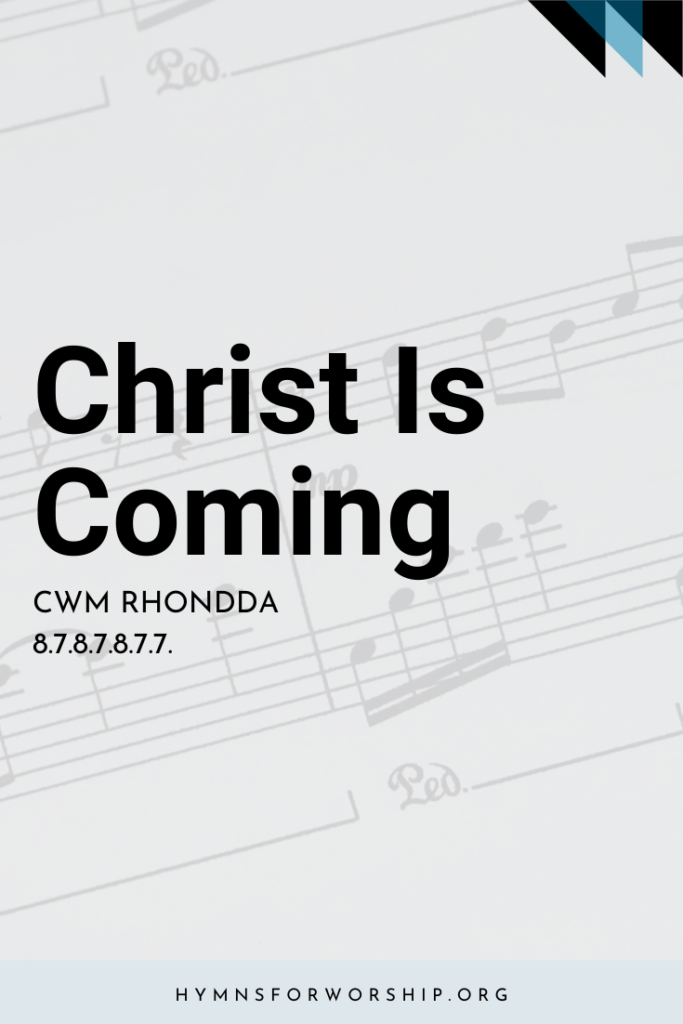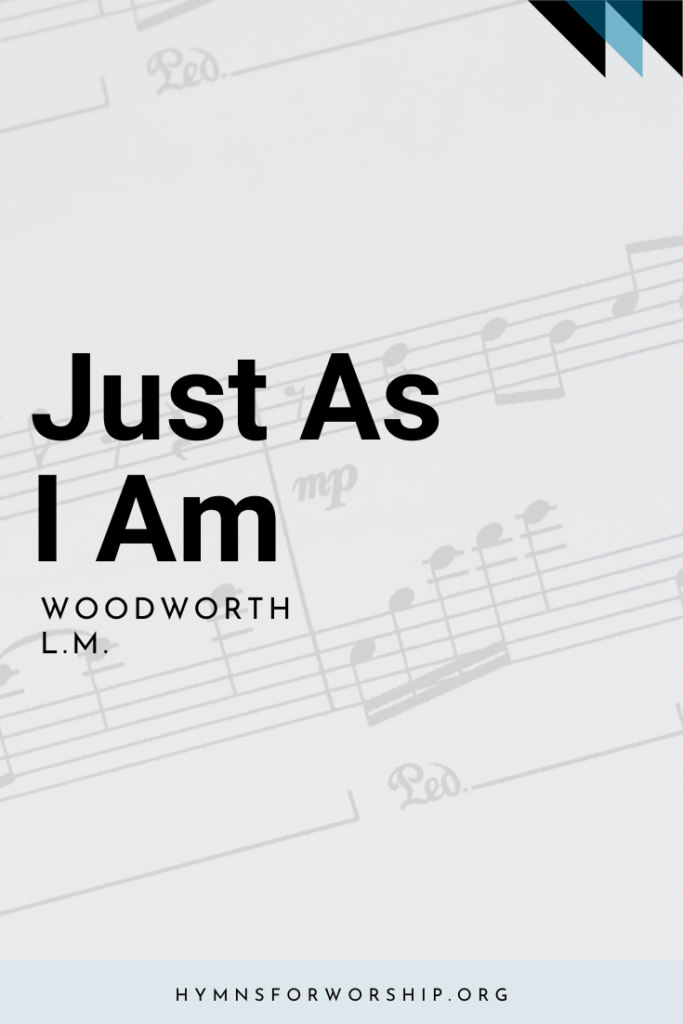JESUS CHRIST >> SECOND ADVENT
SDAH 201
Christ is coming! let creation
Bid her groans and travail cease;
Let the glorious proclamation
Hope restore and faith increase;


Text
1
Christ is coming! let creation
Bid her groans and travail cease;
Let the glorious proclamation
Hope restore and faith increase;
Christ is coming! Christ is coming!
Come, Thou blessed Prince of Peace!
(Prince of Peace!)
Come, Thou blessed Prince of Peace!
2
Earth can now but tell the story
Of Thy bitter cross and pain;
She shall yet behold Thy glory
When Thou comest back to reign;
Christ is coming! Christ is coming!
Let each heart repeat the strain.
(repeat the strain)
Let each heart repeat the strain.
3
With that “blessed hope” before us,
Let no harp remain unstrung;
Let the mighty advent chorus
Onward roll from tongue to tongue:
Christ is coming! Christ is coming!
Come, Lord Jesus, quickly come!
(quickly come!)
Come, Lord Jesus, quickly come!

Hymn Info
Biblical Reference
(a) Rev 22:20; Rom 8:22, Isa 9:6 (b) Matt 26:27 (c) Tit 2:13
Author
John R. MacDuff (1818-1895)
Hymn Tune
CWM RHONDDA
Metrical Number
8.7.8.7.8.7.7.
Composer
John Hughes (1873-1932)
Alternate Tune
BRYN CALFARIA SDAH 165; Lower key SDAH 538
Hymn Score
Piano Accompaniment
Recommended Reading
The name Adventist was born out of the belief that Christ is coming soon, literally. Hence, it is not really a surprise when Seventh-day Adventists sing hymns that feature just that.
However, this belief is not privy to Adventists alone. Many other denominations believed it and sang it. And in the case of Presbyterian minister, John R. MacDuff he wrote about it, calling it “the blessed hope”, a terminology common among Adventists.

Notes
Get to know the hymns a little deeper with the SDA Hymnal Companion. Use our song leader’s notes to engage your congregation in singing with understanding. Even better, involve kids in learning this hymn with our homeschooling materials.
Under the title “Second Advent,” this hymn was first printed in a book of hymns by John MacDuff, Altar Stones, 1853. He prefaced it by a quotation from Revelation 1:7, “Behold, he cometh with clouds; and every eye shall see him, and they also which pierced him,” and from Revelation 22:20, “He which testifieth these things saith, Surely I come quickly. Amen. Even so, come, Lord Jesus.” MacDuff obviously believed in the premillennial second coming of Christ as a literal event, just as Seventh-day Adventists do. This scripturally based hymn held a place in many older denominational hymnbooks, but it has been left out of modern hymnals because of widely held views that the Second Coming happens when Christ comes into our lives and universal love fills the hearts of everyone. For example, “Christ Is Coming” was in the Methodist Hymnal, 1905, but was deleted in the 1933 and 1964 editions.
John Ross MacDuff was born May 23, 1818, at Bonhard, Perthshire, Scotland. He went to the University of Edinburgh and studied three years under the famous Thomas Chalmers, who influenced him to give his life to the gospel ministry. He did not go along with Disruption in 1843, when secession from the state church resulted in the formation of the Free Church of Scotland, but was ordained in 1842 by the Established Church of Scotland. After serving several small parishes, he was given a magnificent new church with a large congregation at Sandyford, a part of Glasgow, where he stayed for 15 years. He declined an offer from the Crown to go to the Cathedral Church in Glasgow, and in 1871 gave up his pastoral duties to devote his entire time to literary pursuits. Among his very successful books are Faithful Promise, Morning and Night Watches, and The Mind and Words of Jesus. A definitive book of his hymn texts, Gates of Praise, was published in 1875. He was a member of the hymnal committee of the Church of Scotland, and honorary D.D. degrees were conferred on him by the Universities of Edinburgh, Glasgow, and New York. He died at Chislehurst, Kent, England, on April 30, 1895.
CWM RHONDDA is one of the most used of the great Welsh tunes, and has been very popular in America. Cwm is Welsh for valley, and Rhondda is the name of the river the runs through the heart of the coal-mining area of south Wales. The tune was written by John Hughes for a Baptist singing festival held at Capel Rhondda, Pontypridd, Wales, about 1905. The Welsh name for the hymn singing festival is Cymanfa Ganu; it is still a much-loved event in Wales, United States, and Canada.
John Hughes was born November 22, 1873, at Dowlais, Wales, but in his first year his parents moved to the mining village of Llantwitfarder, south of Pontypridd in Galmorganshire. Here he spent his life, first as a doorboy at a coal mine, and later in traffic department of the Great Western Colliery Company. He was an active member of Salem Baptist Church at Llantwitfarder all his life, and followed his father as deacon and precentor (leader of the singing) Even though he had no formal music training that we know of, his natural musical gift resulted in the writing of several hymn tunes, anthems, and Sunday school songs. He died May 14, 193.
CWM RHONDDA is also used, in key one-half step lower, for SDAH 415 and 538
-from Companion to the Seventh-day Adventist Hymnal by Wayne Hooper and Edward E. White






